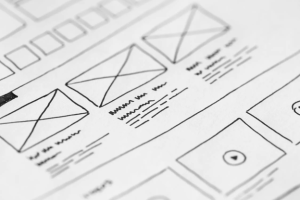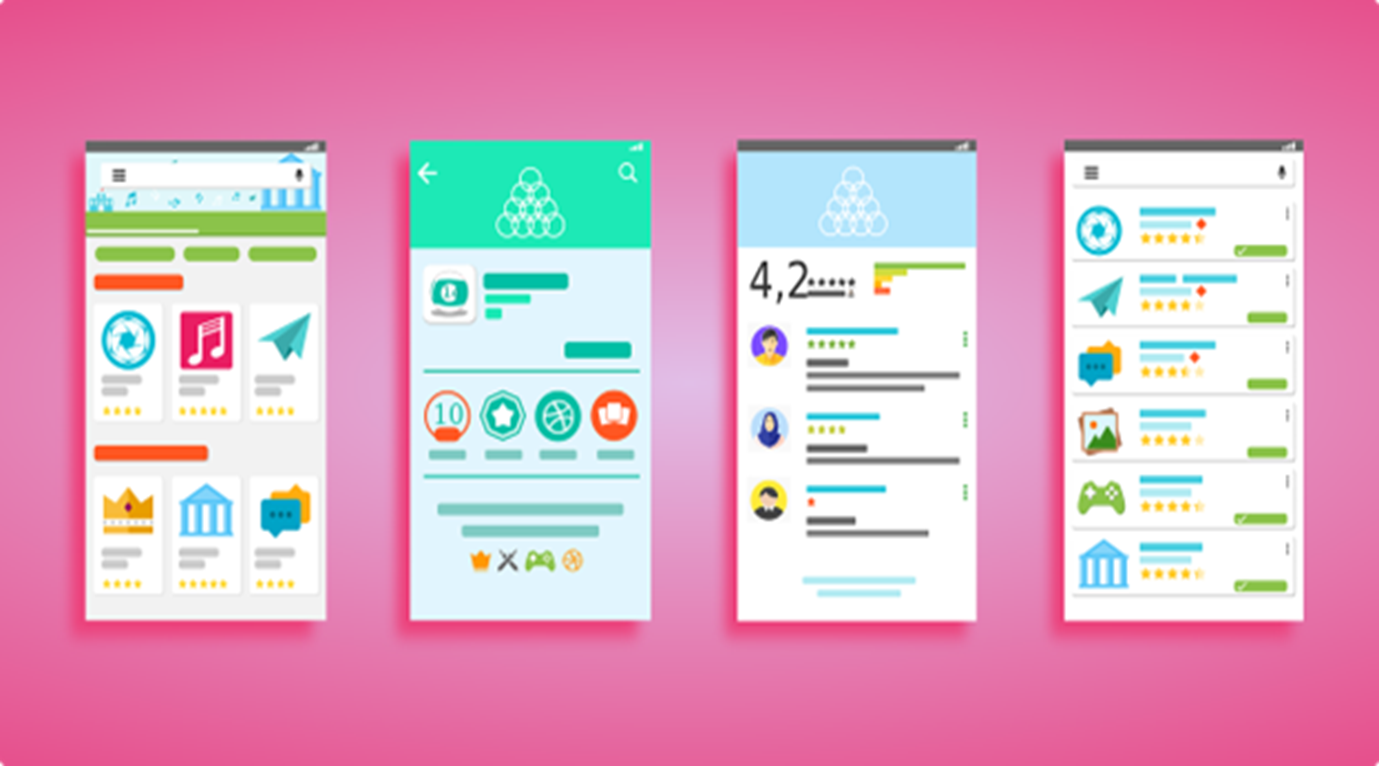Introduction
In today’s digitally driven world, user interface (UI) design is no longer a niche concern; it’s a fundamental element for business success. Explaining user interface design goes beyond aesthetics; it’s about crafting intuitive and engaging interfaces that bridge the gap between users and technology. For Australian businesses, understanding the unique characteristics of the local digital landscape and its influence on UI design is crucial for achieving a competitive edge.
This blog post delves into the world of UI design in Australia, exploring current trends, cultural considerations, and best practices. We’ll also examine how emerging technologies are shaping the future of UI design in this dynamic market.
Unveiling the Magic: The Fundamentals of UI Design
Before diving into the Australian UI design scene, let’s establish a strong foundation. Effective UI design rests upon three core principles: clarity, consistency, and responsiveness.
- Clarity: A user interface should be self-explanatory. Users should be able to navigate the interface intuitively, understanding the purpose of each element and how to interact with it. Clear and concise language, well-defined buttons, and logical layouts are all essential for achieving clarity.
- Consistency: Consistency fosters trust and familiarity. This means maintaining a consistent visual language throughout the interface, including fonts, colors, and button styles. Consistency also extends to user interaction patterns; users should expect similar actions to produce similar results across different parts of the interface.
- Responsiveness: In today’s multi-device world, UI design needs to be responsive. This means ensuring the interface adapts seamlessly to different screen sizes and devices, from desktops to tablets and smartphones. Responsive design not only improves user experience but also expands your reach to a wider audience.
These core principles form the bedrock of successful UI design. By prioritizing clarity, consistency, and responsiveness, Australian businesses can create user interfaces that are not only aesthetically pleasing but also explain user interface interactions effectively, leading to a more engaging and productive user experience .
Down Under Design: Top Trends in Australian UI Design
The Australian UI design landscape is a vibrant and ever-evolving space. Here’s a glimpse into some of the most prominent trends captivating the market:
- Minimalism Reigns Supreme: Australian UI design embraces a clean and minimalist aesthetic. This translates to uncluttered interfaces with ample white space, focusing on essential elements and functionalities. Minimalism fosters user focus and improves navigation, making it ideal for the fast-paced digital world.
- Dark Mode Makes its Mark: Dark mode interfaces, with their darker backgrounds and lighter text, are gaining traction in Australia. This trend offers several benefits, including reduced eye strain in low-light environments and improved battery life for mobile devices. Additionally, a well-executed dark mode can contribute to a sleek and sophisticated user experience.
- Immersive Experiences Take Center Stage: Australian UI designers are increasingly incorporating immersive elements into their creations. This could involve features like 360° product views, virtual reality experiences, and augmented reality overlays. These immersive experiences provide users with a deeper level of engagement and can be particularly effective for showcasing products or services.
- Microinteractions Add Delightful Touches: Microinteractions are subtle animations or feedback mechanisms that respond to user actions. They can be as simple as a button that changes color when hovered over or a notification that disappears after a few seconds. While seemingly insignificant, well-designed microinteractions can enhance user experience by adding a touch of delight and reinforcing user actions.
- Accessibility for All: Australian UI designers are placing a strong emphasis on accessibility. This means creating interfaces that are usable by everyone, regardless of their abilities. This includes features like clear and concise language, proper use of color contrast, and compatibility with assistive technologies. Prioritizing accessibility ensures a more inclusive user experience and demonstrates a commitment to social responsibility.
These trends highlight the Australian UI design scene’s focus on user experience, functionality, and innovation. By embracing these trends and tailoring them to their specific audience, Australian businesses can create user interfaces that are not only visually appealing but also explain user interface interactions effectively, leading to higher user engagement and brand loyalty.
Beyond the Trends: Cultural Nuances Shaping Australian UI Design
Australia boasts a unique cultural landscape that influences all aspects of design, including UI. Understanding these cultural nuances is essential for creating user interfaces that resonate with the local audience. Here are some key considerations:
- Informality and Friendliness: The Australian culture is known for its informality and friendliness. This translates to a preference for UI design that is approachable and easy to use. Complex interfaces or overly formal language can alienate users. Opt for clear and concise language, conversational tones, and a welcoming overall aesthetic.
- Emphasis on Visuals: Australians are visually oriented, responding well to captivating imagery and design elements. Consider incorporating high-quality images, infographics, and videos into your UI design. This can enhance user engagement and make complex information more digestible.
- Mobile-First Mentality: Australia has a high mobile device penetration rate, with a significant portion of users accessing the internet primarily through smartphones. This necessitates a mobile-first approach to UI design. Ensure your interface is optimized for smaller screens and provides a seamless user experience across all devices.Have data analysis skills to support decision-making.
- Focus on Practicality: Australian users tend to value practicality and efficiency. Explain user interface components clearly and ensure the interface is intuitive to navigate. Users should be able to find what they need quickly and easily without getting lost in a maze of menus and options.
- Humor Down Under: Australians appreciate a touch of humor. While maintaining professionalism, consider incorporating subtle humor into your UI design through witty copy or playful illustrations. This can create a more endearing user experience and help build rapport with the audience.
By understanding these cultural nuances, Australian UI designers can create interfaces that not only adhere to global best practices but also resonate with the local user base. This cultural sensitivity fosters a sense of familiarity and trust, ultimately leading to a more positive user experience and stronger brand connection.
Crafting User-Friendly Interfaces: Best Practices for the Australian Market

Having explored the core principles, current trends, and cultural considerations shaping UI design in Australia, let’s delve into actionable best practices for creating user-friendly interfaces that resonate with the local audience.
- Prioritize Usability Testing: Usability testing is the cornerstone of user-centered design. It involves recruiting representative users to test your UI design and identify any usability issues. This feedback is invaluable for improving the clarity, efficiency, and overall user experience of your interface.
- Embrace Feedback Loops: Don’t view usability testing as a one-time event. Establish feedback loops to gather ongoing user input. This could involve surveys, in-app feedback mechanisms, or customer support channels. By actively listening to your users, you can continuously refine your UI design and ensure it remains relevant and user-friendly.
- Localization is Key: If your target audience extends beyond Australia, consider localization efforts. This involves adapting your UI design to suit the specific language, cultural norms, and user preferences of your international markets. This may involve translating text, adjusting layouts, and incorporating culturally relevant imagery.
- Optimize for Performance: A sluggish or unresponsive interface will quickly frustrate users. Ensure your UI design is optimized for performance, focusing on fast loading times and smooth interactions. This includes optimizing images, minimizing unnecessary animations, and utilizing efficient coding practices.
- Mobile-First, Always: As we’ve previously discussed, Australians are highly mobile-dependent. Explain user interface components clearly for small screens and prioritize a seamless user experience across all devices. Consider employing responsive design principles or even developing dedicated mobile apps to cater to this mobile-first audience.
- Strike a Balance Between Aesthetics and Functionality: While aesthetics are important, they should never come at the expense of functionality. A beautiful interface that is cumbersome to use will ultimately fail. Ensure your UI design strikes a balance between visual appeal and clear, intuitive functionality. Focus on guiding users efficiently towards their goals and providing clear visual cues for interaction.
- Seek Inspiration from Local Success Stories: Australia boasts a thriving UI/UX design community. Take inspiration from successful local products and applications. Analyze their user interfaces, identify best practices, and consider how you can adapt them to your own project.
By adhering to these best practices, Australian businesses and UI/UX designers can create user interfaces that are not only aesthetically pleasing and culturally relevant but also explain user interface interactions effectively, leading to a more intuitive and user-friendly experience for the Australian market.
The Technological Frontier: How Innovation is Shaping UI Design in Australia
The world of UI design is constantly evolving, driven by advancements in technology. Here, we’ll explore some of the most promising emerging technologies and their potential to revolutionize UI design in the Australian market:
- Artificial Intelligence (AI): AI has the potential to personalize UI experiences significantly. Imagine interfaces that adapt to user preferences, anticipate needs, and offer proactive suggestions. AI-powered chatbots can provide real-time customer support, while AI-driven content personalization can ensure users see the most relevant information.
- Augmented Reality (AR): AR overlays digital information onto the real world, creating immersive experiences. User interface elements could be integrated seamlessly into the user’s physical environment. Australian businesses can leverage AR for product visualization, allowing users to see furniture in their homes or try on clothes virtually.
- Virtual Reality (VR): VR transports users to completely simulated environments. This technology holds immense potential for education, training, and entertainment in Australia. VR experiences can be particularly effective for showcasing complex products or services or providing immersive learning experiences.
- Voice User Interfaces (VUIs): Voice-activated interfaces are becoming increasingly popular. Australians are embracing smart speakers and voice assistants, making VUIs a valuable design consideration. Explain user interface interactions through clear voice prompts and ensure your interface is responsive to natural language commands.
- The Internet of Things (IoT): As more devices become interconnected, UI design will need to encompass the entire user journey across various touchpoints. Australian businesses can leverage UI design to create seamless interactions between smart devices and users, ensuring a cohesive and intuitive experience.
These emerging technologies present exciting opportunities for Australian UI designers. By embracing innovation and strategically integrating these advancements, businesses can create user interfaces that are not only user-friendly but also more engaging, interactive, and personalized.
Ready to Transform Your Design Experience with Neuronimbus?
Schedule a Call
Gazing into the Crystal Ball: The Future of UI Design in Australia
The Australian UI design scene is poised for continued growth and innovation. Here are some predictions for the future of this dynamic field:
- Focus on User Needs: The user will remain at the center of UI design. Explaining user interface interactions clearly and prioritizing user needs will be paramount. Expect to see even greater emphasis on user research, usability testing, and accessibility.
- Personalization Reigns Supreme: With the help of AI and big data, UI design will become increasingly personalized. Interfaces will adapt to individual user preferences, past behavior, and real-time context. This level of personalization will lead to a more relevant and engaging user experience.
- The Rise of Voice and Gesture Control: Voice and gesture control interfaces will become more prevalent, particularly with the increasing popularity of smart speakers and AR/VR technologies. Explaining user interface interactions through clear voice prompts and intuitive gesture recognition will be crucial.
- Augmented Reality Takes Center Stage: AR is expected to play a significant role in the future of UI design. Imagine using AR glasses to navigate a city, receive real-time information about products on store shelves, or even receive step-by-step repair instructions with 3D overlays. AR has the potential to blur the lines between the physical and digital worlds, creating a more seamless and interactive user experience.
- Ethical Considerations Come to the Forefront: As UI design becomes more sophisticated and integrates emerging technologies, ethical considerations will become increasingly important. Designers will need to focus on responsible data collection practices, user privacy, and ensuring technology is used for good.
The future of UI design in Australia is bright. By embracing these trends and prioritizing user needs, Australian businesses and UI/UX designers can create user interfaces that are not only functional and aesthetically pleasing but also explain user interface interactions effectively, fostering a more intuitive, engaging, and personalized digital experience for the Australian market.
Conclusion
As the digital landscape continues to evolve, the importance of user interface design cannot be overstated. Australian designers and businesses have a unique opportunity to leverage the latest trends, cultural nuances, and emerging technologies to create exceptional user experiences that resonate with their audience.
By embracing the insights and best practices outlined in this article, you can position yourself at the forefront of UI/UX innovation. From prioritizing user research and usability testing to staying abreast of emerging technologies, the key to success lies in your ability to adapt and evolve.
At Neuronimbus, we understand the ever-changing demands of the digital world. Our team of experienced UI/UX designers is dedicated to crafting intuitive interfaces that not only look great but also deliver exceptional user experiences. Whether you’re a startup looking to make a splash or an established business seeking to revitalize your digital presence, we’re here to help you thrive in the dynamic Australian market.
So, why wait? Take the first step towards UI/UX excellence with Neuronimbus and elevate your digital journey today.




